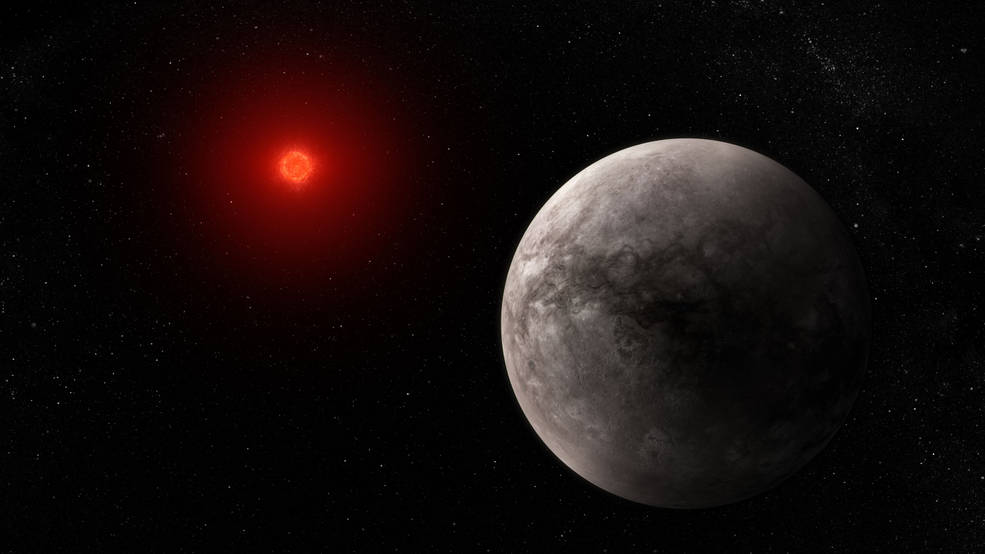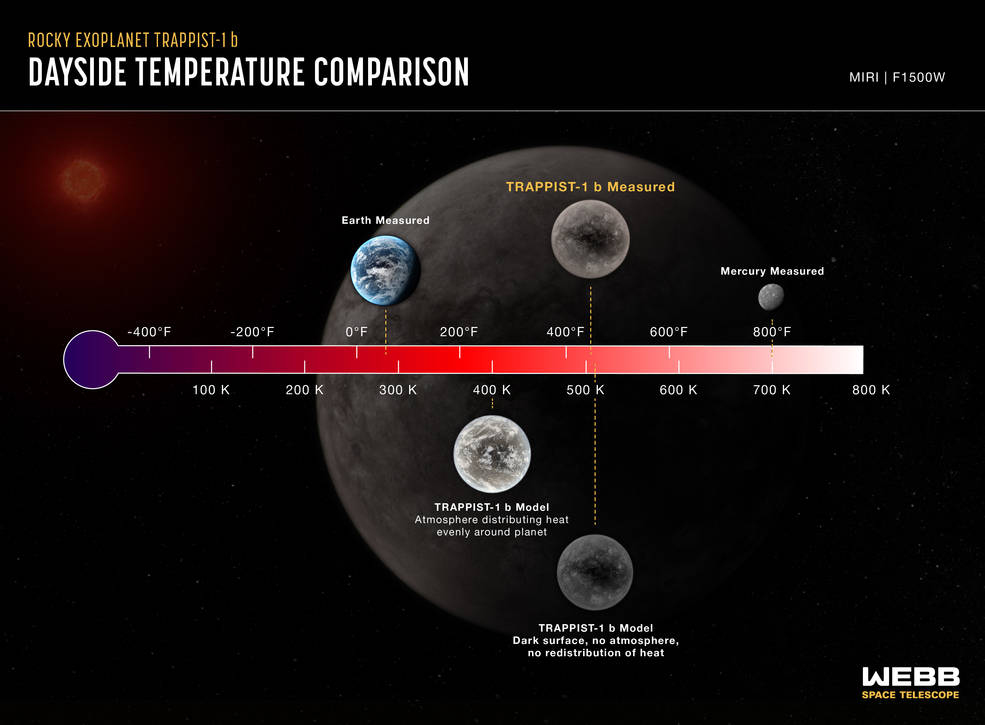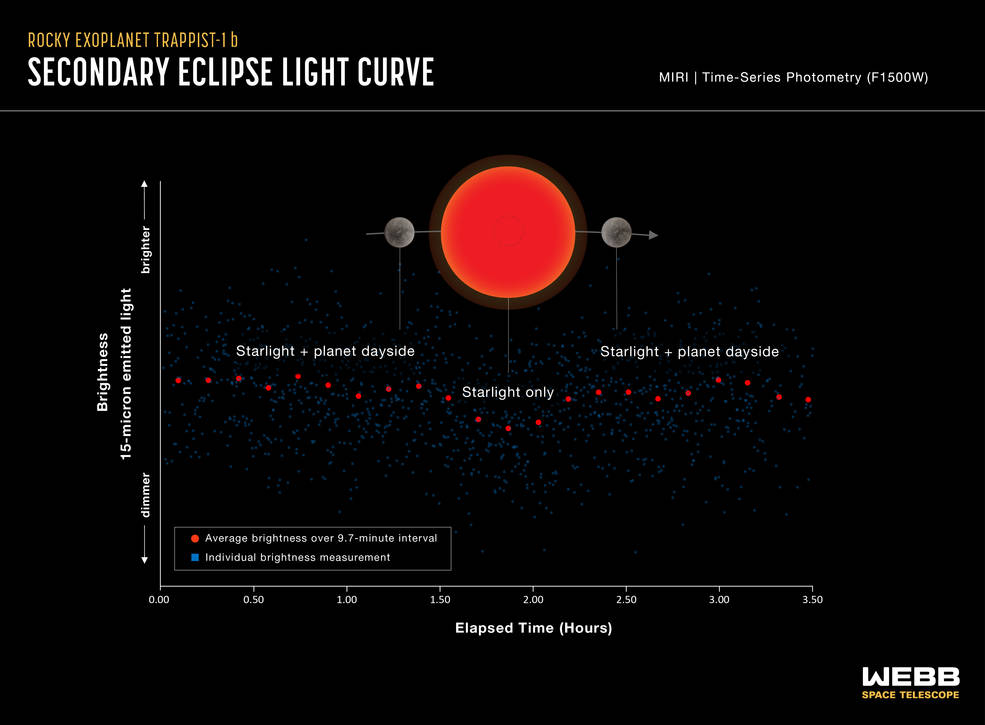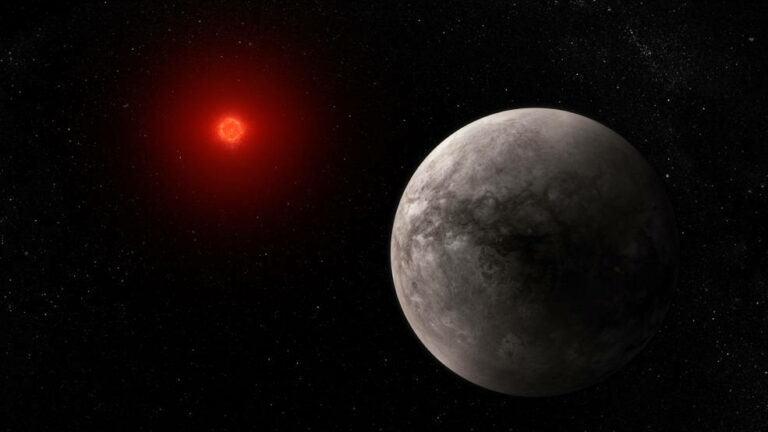NASA’s Webb Space Telescope measures the temperature of a rocky exoplanet
By using NASA’s James Webb Space Telescope, an international team of researchers has successfully determined the temperature of the rocky exoplanet TRAPPIST-1 b. They measured the planet’s thermal emission, which is the heat energy emitted in the form of infrared light and detected by Webb’s Mid-Infrared Instrument (MIRI). According to the results published in the journal Nature, the dayside temperature of the planet is approximately 500 kelvins (around 450 degrees Fahrenheit), and the research suggests that it has no significant atmosphere.

Credits: NASA, ESA, CSA, J. Olmsted (STScI)
This discovery marks the first detection of any type of light emitted by an exoplanet as small and cool as the rocky planets in our solar system, which is a significant step in determining if planets that orbit small active stars like TRAPPIST-1 can support life-sustaining atmospheres. Additionally, it indicates that Webb’s MIRI is capable of characterizing temperate, Earth-sized exoplanets. Thomas Greene, an astrophysicist at NASA’s Ames Research Center, lead author of the study, said that “These observations really take advantage of Webb’s mid-infrared capability. No previous telescopes have had the sensitivity to measure such dim mid-infrared light.”

Credits: Illustration: NASA, ESA, CSA, J. Olmsted (STScI); Science: Thomas Greene (NASA Ames), Taylor Bell (BAERI), Elsa Ducrot (CEA), Pierre-Olivier Lagage (CEA)
Rocky Planets Orbiting Ultracool Red Dwarfs
A group of astronomers made an important discovery in 2017 when they found seven rocky planets orbiting a red dwarf star, located about 40 light-years away from Earth. These exoplanets are intriguing because they have similar sizes and masses to the rocky planets found in our own solar system. Despite their close proximity to their star, the planets receive comparable amounts of energy to what Earth gets from the Sun, making them valuable for research on habitable planets. The innermost planet, TRAPPIST-1 b, has an orbital distance that is one-hundredth of Earth’s and receives four times the amount of energy from its star.
While it is not within the habitable zone, the planet can still provide valuable insights about other exoplanets orbiting M-dwarf stars. These stars are abundant in our galaxy, but they are also very active and have the potential to wipe out an atmosphere. The TRAPPIST-1 system is a great laboratory for studying habitability around M-dwarfs and is one of the best targets for studying the atmospheres of rocky planets.
Detecting an Atmosphere (or Not)
Earlier observations of TRAPPIST-1 b, conducted using the Hubble and Spitzer space telescopes, failed to confirm the existence of a puffy atmosphere but could not rule out the possibility of a denser one. To reduce this uncertainty, scientists needed to measure the planet’s temperature. TRAPPIST-1 b is tidally locked, meaning that one side always faces the star while the other remains in permanent darkness. According to Pierre-Olivier Lagage, a co-author on the paper and a researcher at CEA, “If it has an atmosphere to circulate and redistribute the heat, the dayside will be cooler than if there is no atmosphere.”
The researchers employed secondary eclipse photometry, a technique that uses MIRI to measure the brightness changes of the system as the planet passes behind the star. Although TRAPPIST-1 b is not hot enough to emit visible light, it does emit infrared radiation. By subtracting the brightness of the star alone (during the secondary eclipse) from the brightness of the star and the planet combined, they were able to calculate the amount of infrared light emanating from the planet.

Credits: Illustration: NASA, ESA, CSA, J. Olmsted (STScI); Science: Thomas Greene (NASA Ames), Taylor Bell (BAERI), Elsa Ducrot (CEA), Pierre-Olivier Lagage (CEA)
Measuring Minuscule Changes in Brightness
Detecting the secondary eclipse with the Webb telescope is a significant achievement, considering the star is over 1,000 times brighter than the planet, and the change in brightness is less than 0.1%. Despite concerns that the eclipse might be missed due to imperfect orbits of the planets, the team was able to match the predicted time within minutes. By analyzing data from five secondary eclipse observations, the team concluded that TRAPPIST-1 b is most likely a blackbody made of bare rock without an atmosphere to circulate the heat, and no signs of light being absorbed by carbon dioxide were detected.
Additional secondary eclipse observations are ongoing, and the team hopes to capture a full phase curve to observe the change in brightness over the entire orbit to confirm if the planet has an atmosphere. The success of the TRAPPIST-1 observations marks a significant milestone in the discovery of exoplanets, and the Webb telescope is a crucial tool in this effort. The international program led by NASA with its partners ESA and CSA includes the MIRI instrument designed and built by a consortium of European Institutes and NASA’s Jet Propulsion Laboratory in partnership with the University of Arizona.
Do not forget to share your opinion with us to provide you with the best posts !




0 Comments